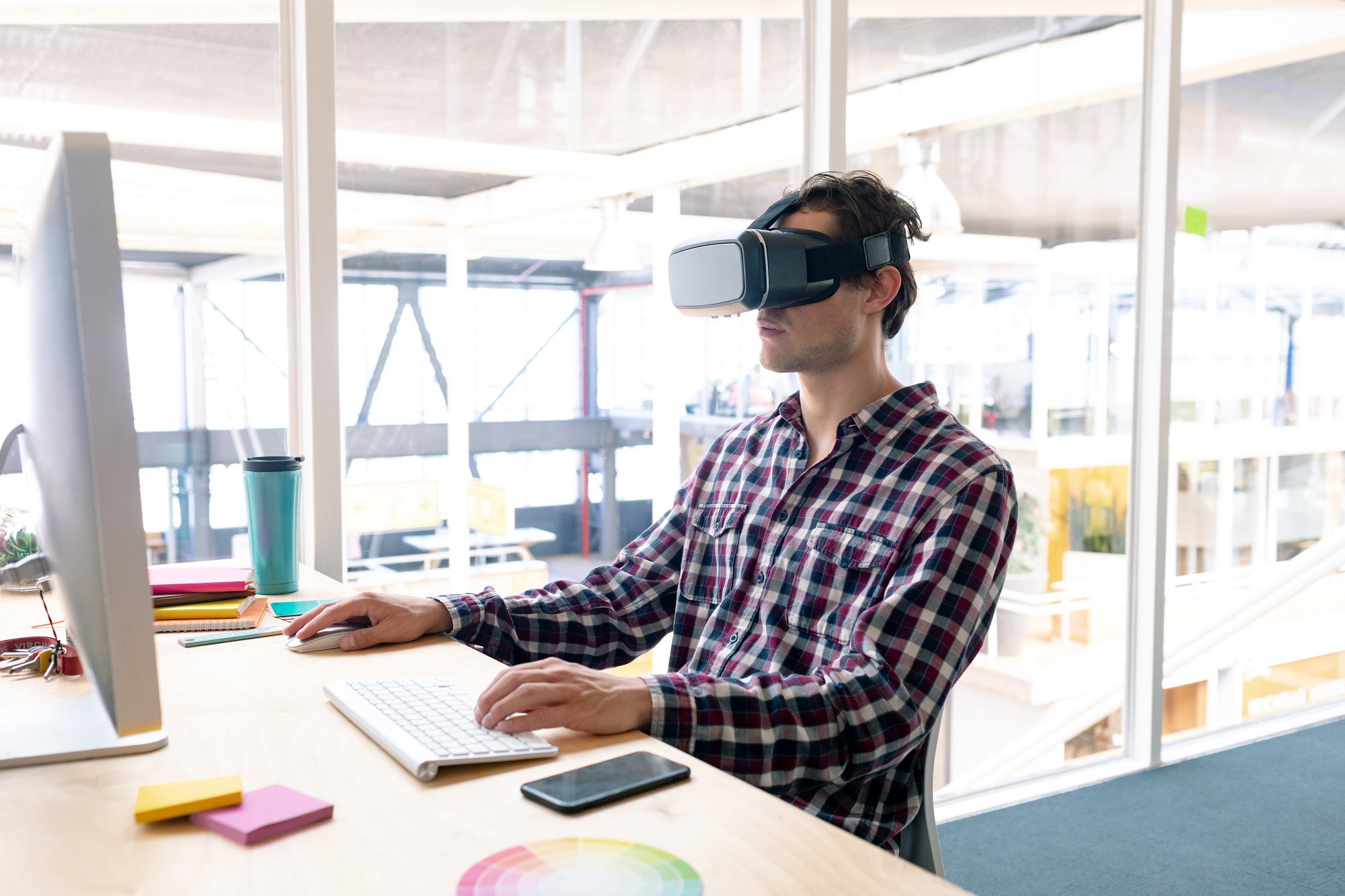1. Integrating a New Employee
Proper onboarding boosts employee productiveness by more than 70% and retention by a staggering 82%, research shows. To create a healthy working environment and keep their new hires, many companies have integrated VR. This technology helps people feel connected. For remote employees, this is a key strategy for adding immersion and improving workflow.
But, that’s not all. With virtual reality, a business can create the ultimate working environments where the staff can interact with one another from all around the world. That means using the tech for conference calls, meetings, and chats. Therefore, it makes projects much easier to organize.
Simply put, VR replaces real-world interactions with a much more convenient option.
To create a healthy working environment and keep their new hires, many companies have integrated VR. This technology helps people feel connected. For remote employees, this is a key strategy for adding immersion and improving workflow.
But, that’s not all. With virtual reality, a business can create the ultimate working environments where the staff can interact with one another from all around the world. That means using the tech for conference calls, meetings, and chats. Therefore, it makes projects much easier to organize.
Simply put, VR replaces real-world interactions with a much more convenient option.
2. Emergency Training
According to a study published by the University of Nottingham, VR sets can provide much safer evacuation drills. Immersive Virtual Reality stimulates the person’s senses. Therefore, it gives users a better understanding of their environment, which makes it a highly more effective method for training scenarios. Many companies have already invested in VR sets to boost emergency training, like Walmart, for example. Last year, the multimillion-dollar retail company invested in 17,000 VR goggles to train 1 million employees. However, this is not the only business that has taken this step. Oil, manufacturing, and health care companies have too purchased multiple VR sets to train their staff with a multisensory VR environment.
Leave a Comment